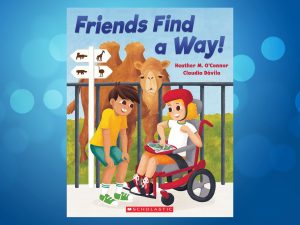According to research, 1 in 10 Canadians reported being sexually victimized before they turned 18. In the majority of child sexual abuse cases, the offender was known to the child. The majority of adult survivors of child sexual abuse report that they did not disclose the abuse to anyone when they were children with 93% of child abuse cases are never brought forward to police or child welfare.
Child sexual abuse includes a wide range of behaviours and situations—offences can range from one-time occurrences to multiple experiences; from one offender to multiple offenders; with or without the use of violence. Offences can also vary from non-contact sexual offences, such as voyeurism or exposing a child to pornography, to hands-on sexual offences.
How does child sexual abuse happen?
One word sums it up — manipulation. Offenders’ manipulations are wide ranging, and can include offering up appealing items such as bribes, gifts, and games, but generally involve moving children into vulnerable positions and finding legitimate ways of spending time with them alone.
Manipulation is also about building and developing an emotional connection, making the child feel special, and then using that trust to exploit and control the child. Survivors often say that this betrayal of trust was the most devastating part of the abuse.
The most common response to child sexual abuse is silence. Children often avoid telling someone about sexual abuse because they are confused about what has happened and are afraid they won’t be believed or worry about what a disclosure may do to their family.
How to protect your children
When your child is ready to attend childcare, school, or sports activities it is important to know the policies that are in place to protect your child from sexual abuse. The following steps will guide you through a process to help you make the right choice:
• Get to know the group and its leadership. Sex offenders often intentionally target child-serving organizations to obtain employment or volunteer positions to gain access to and exploit children. Take the time to learn about the organization’s history, mandate, structure, hiring policies and values.
• Visit the location for a tour. What impression were you left with after visiting? You’re your own notes about the environment, the employee/volunteer’s interactions with children and each other.
• Are they transparent? Is the team open to questions about child protection and outside ideas? Find out if they have an open-door policy for addressing concerns. Will parents be welcome to stay and watch activities? How is parental involvement encouraged?
Make sure you have the following questions answered before making a commitment:
• Does your organization train staff about child sexual abuse?
• Does your organization have a Code of Conduct for adults working with children? Does it outline clear expectations about boundaries between staff and children? For volunteers? For children? For parents?
• How are staff and volunteer interactions with children supervised?
• Do you have screening and hiring processes for staff and volunteers? (e.g. Interview process, background checks, etc.)
• How is staff misconduct handled?
• What is the organization’s policy for reporting child abuse or staff misconduct?
Ask specific questions about how risk is managed for different activities. Some areas that you should address include naptime, toileting, and one-on-one time with children.
• Find out what protocols are in place for offsite activities (e.g. field trips, walks, swimming programs, etc.) and transportation for overnight trips (e.g. camps, tournaments, overnight stays at museum, etc.).
• Are there instances where children will be visiting staff homes for activities or sleepovers? Or will staff have contact with the kids outside of their work duties or after hours? This can include sport clubs, tutoring, babysitting, trips, etc.
Source: Commit to Kids.
Tip:
As Canada’s tipline for reporting online child sexual abuse and exploitation, Cybertip.ca is also a place for Canadians to turn to for help with concerns about shared intimate images, online luring, and other areas involving child victimization on the internet. For two decades, Cybertip has been dedicated to combating on-line child exploitation and supporting survivors and their families in Canada and around the world.
Cybertip.ca

Myths:
1. Nice people don’t sexually offend against children.
2. Most offenders are strangers.
3. All victims eventually become offenders.
3. If a child were sexually abused they would tell an adult right away.
4. Only hands-on sexual abuse has an emotional impact on children.
Facts:
1. There is no typical sex offender. They can come from all walks of life; they can be part of families; they may be well liked and socially competent.
2. In the vast majority of cases of child sexual abuse the offender is not a stranger to the child.
3. Regardless of their behaviours, child sexual abuse is NEVER a child’s fault—even if they don’t say “no,” if they enjoy being around the offender, if they actively participate, or even potentially initiate some of the contact with the offender.
4. Sexual abuse that does not include contact can still have a psychological and emotional impact on survivors. Child sexual abuse is not limited to situations that include force.














